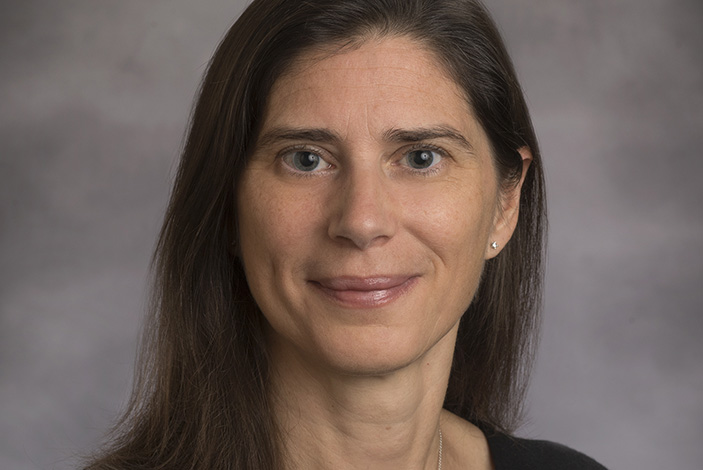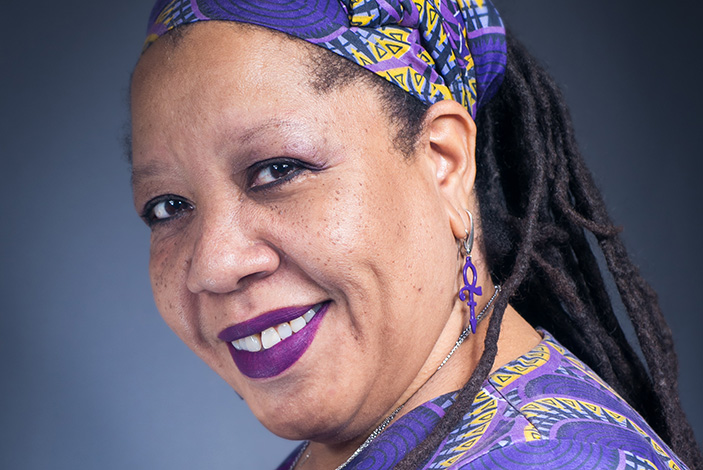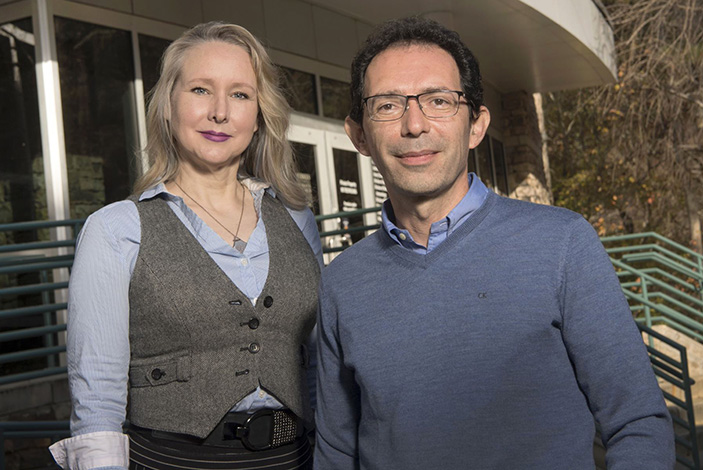Every morning, Amara Jackson fills a large glass with water and swallows a pale pink pill.
She doesn’t need reminding. The 19-year-old student has been on antiretroviral therapy (ART) her whole life.
“I don’t even think about it,” she says. “It’s just a part of who I am.”
Jackson is one of the 1.2 million Americans living with HIV. She was born with the virus; her mother was infected and passed it along.
Every six months, Jackson checks in with her Emory University doctors at Grady’s Ponce De Leon Center, which specializes in HIV and AIDS. So far, the drug is doing its job, keeping the virus at nearly undectable levels. She is healthy — thriving, even. But the virus is still inside her. And if she stops her medicine it would likely emerge from hiding and attack her immune system.
One day, Jackson would like to be free of HIV altogether. That’s long seemed unthinkable. But maybe not anymore.
This year, the National Institutes of Health, through the Martin Delaney Collaboratories for HIV Cure Research, invested about $53 million into eradicating the virus. That’s the largest annual amount the consortium has awarded, and the funding will continue for five years.
Emory researchers are leading two of the initiatives — called collaboratories because they involve large networks of researchers from different institutions. One of the Emory collaboratories aims to learn more about the potential for HIV cure or remission in children, and the other examines immune-based therapies to eliminate or control the virus in the absence of ART. Both projects rely heavily on the animals, technology and expertise at Emory’s Yerkes National Primate Research Center, the only primate center to lead a Martin Delaney Collaboratory.
“Finding a cure is still a huge challenge, but recent discoveries and advances make us optimistic,” says Mirko Paiardini, who is leading the Emory study testing immune-based therapies for an HIV cure.
The new funding comes as the U.S. marks the 40th anniversary of the first official report about what came to be known as AIDS.
Over the span of those four decades, what was once a deadly disease has become, for many, a chronic condition. Anti-HIV drugs — including Emory-developed Emtriva and Epivir — are able to suppress viral loads in most people who are infected with the virus, but the virus has a maddening ability to hide inside the body in areas known as reservoirs, and rebound when patients stop taking their medication.
Prevention efforts, such as pre-exposure prophylaxis (PrEP), have helped to reduce new infections Still, every day there are more than 4,000 people around the globe newly infected with HIV. Efforts to find a vaccine have, so far, been unsuccessful.
But new understanding of how the virus works is focusing fresh attention on also finding a cure.
For evidence, just follow the funding. A decade ago, 90% of Emory’s HIV-related research funding was aimed at vaccine work and just 10% on work that might lead to a cure. Today, that number is about evenly split.
Work on an HIV vaccine is important but it doesn’t help the millions of people who already infected, many of them children, like Jackson, who were born with the virus.
Hope for children with HIV
Ann Chahroudi is co-principal investigator on the pediatric HIV study. The five-year, $27.6 million Pediatric Adolescent Virus Elimination (PAVE) Collaboratory involves 36 U.S. and internationally based co-investigators.
“We know children’s immune systems are different,” says Chahroudi. “But there is still a lot that we don’t know when it comes to HIV and kids, especially infants.”
HIV can be passed from mother to child through the placenta, during birth or even through breast milk. A central question PAVE seeks to answer is whether an infant’s unique immune system could be coaxed into stopping HIV from taking root in the first place. PAVE will also develop procedures, tools and techniques, including imaging, to monitor HIV and immune responses that are specific for infants, children and adolescents.
The co-principal investigator on the PAVE collaboratory is Deborah Persaud, MD, a virologist and professor at the Johns Hopkins University School of Medicine, who worked with the “Mississippi baby.”
Born prematurely to a woman who did not know she was HIV-positive and so had not received any treatment during pregnancy, the infant began an aggressive regimen of liquid antiretroviral drugs the day after she was born and continued until she was 18 months old. She remained off the drugs and virus-free the next 27 months. But then, just two months before her fourth birthday, the virus reappeared, dashing hopes of a medical breakthrough.
“It was disappointing, but we also learned from it,” Chahroudi says. “Her story prompted scientists all over the world to start thinking more deeply about HIV remission strategies for children.”
For Jackson, who has spent a lifetime grappling with HIV, the prospect of a cure is tantalizing.
“It would be amazing actually, because I feel like it would help a lot of people,” she says. “I’ve had doctors and good treatment, but not everyone has that.”
It takes a community
In 1989, the year the number of AIDS cases in the U.S. surpassed 100,000, Dazon Dixon Diallo stepped in to help women in need.
She remembers the early days of AIDS.
The stigma. The fear. The hopelessness.
“It was a death sentence,” she says. “The prognosis was sometimes just weeks. People would just disappear.”
Based in Atlanta, she saw infections climb at an alarming rate. Most of the focus was on gay men. But HIV was also taking a toll on people of color, including women. And they were largely being ignored.
Seeking to help those affected and stop AIDS from setting more case records, Diallo launched SisterLove. It was the first HIV and sexual and reproductive justice advocacy organization in the Southeastern United States to focus on women.
Three decades later, SisterLove is still going strong and Diallo’s grassroots work has been credited with getting women better access to HIV treatment and into clinical trials.
When Emory researchers asked if SisterLove would partner on The Enterprise for Research and Advocacy to Stop and Eradicate HIV (ERASE HIV), Diallo jumped at the chance. She has long fought for community engagement to be a beginning component of major research projects, instead of being tacked on as an afterthought.
“One thing we are seeing with COVID is that a scientific discovery, like a vaccine, is only effective if people take advantage of it,” says Diallo. “If you have engagement from the beginning — educating the broader community about what is happening and building health literacy — then you are more likely to have trust and buy in.”
'Shock and kill'
Paiardini is leading ERASE HIV, a $23.8 million, five-year project, along with fellow Emory researchers Deanna Kulpa and Guido Silvestri. This collaboratory will fast track research to cure HIV infection or eliminate latent HIV after discontinuing ART, essentially putting HIV in permanent remission.
There are reasons to be optimistic for an HIV/AIDS-free future.
Emory has been a leader in harnessing the immune system to promote its ability to control and eliminate the viral reservoir. One example is the so-called “shock and kill.” The idea is to wake up the latent viruses and then flush them out of their hiding places where they can then be killed. The “shock” portion of the theory has shown promise in mice and monkeys.
Another example is a strategy aimed at improving immune responses to intercepting the virus that tries to rebound immediately after interruption of ART.
SisterLove is forming an advisory panel to work with the ERASE HIV team. The information will flow two ways — researchers will share their scientific studies and advancements with the community, and the community will share first-hand, living with HIV insights with the researchers.
“Without this kind of involvement, this research will stay in the silo of academia and not be accessible to those in the community who are impacted,” says Indya Hairston, SisterLove’s community-based program manager on the ERASE HIV project.
Diallo agrees.
“From the bench to the bodies, that’s the way to go,” she says. “When science engages with the community, everyone wins.”



